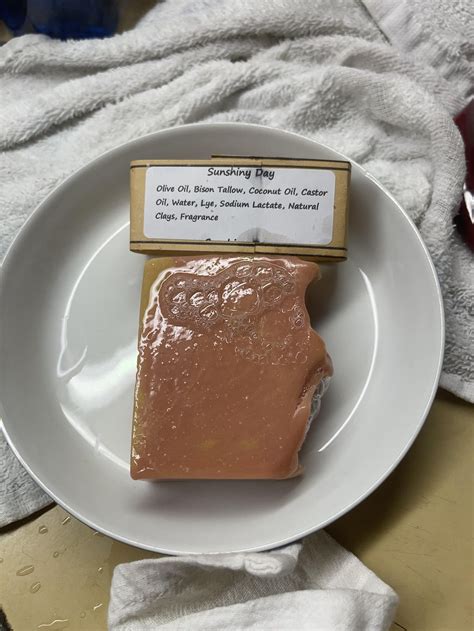Bison Tallow Soap Recipe Calculator: A Beginner's Guide to Crafting Your Own
Making soap can be a rewarding experience, allowing you to control ingredients and create a product tailored to your needs. Bison tallow, known for its moisturizing properties, is a fantastic ingredient for soapmaking. However, calculating the right proportions for a successful batch can be tricky. This guide provides a step-by-step approach to creating your own bison tallow soap recipe, along with a simplified calculator to help you along the way.
Understanding the Soapmaking Process: Saponification
Before diving into the recipe, it's crucial to grasp the basic principle: saponification. This is the chemical reaction between fats (oils and tallow) and lye (sodium hydroxide or potassium hydroxide) that transforms them into soap and glycerin. Getting the right lye concentration is paramount to avoid harsh soap or leftover lye.
Key Ingredients:
- Bison Tallow: The star ingredient, providing hardness and conditioning properties.
- Oils (Optional): Adding other oils like olive oil, coconut oil, or castor oil can adjust the soap's hardness, lather, and conditioning properties. Experiment to find your preferred combination!
- Lye (Sodium Hydroxide): The crucial ingredient that initiates saponification. Handle lye with extreme caution, always wearing safety goggles and gloves.
- Water: Used to dissolve the lye.
The Simplified Bison Tallow Soap Recipe Calculator
While precise lye calculators are available online, here's a simplified approach for smaller batches, focusing on the bison tallow percentage:
Step 1: Determine the Batch Size (in ounces): Let's start with a small batch, say 24 ounces of total oils and fats.
Step 2: Choose your Bison Tallow Percentage: You can start with a high percentage of bison tallow, perhaps 60% for a rich, moisturizing soap. This means 14.4 ounces of bison tallow (60% of 24 ounces).
Step 3: Calculate the Remaining Oil (if any): In our example, you'll have 9.6 ounces of other oils to add (24 ounces - 14.4 ounces = 9.6 ounces). You can split this among other oils like olive oil, coconut oil, etc.
Step 4: Use an Online Lye Calculator: While the above steps simplify oil calculation, you'll need a lye calculator to accurately determine the required amount of lye and water based on your specific oil blend. Many free calculators are available online by searching "lye calculator for soapmaking."
Step 5: Follow Safety Precautions: Remember, lye is caustic. Always wear safety glasses, gloves, and work in a well-ventilated area.
Crafting Your Bison Tallow Soap: A Step-by-Step Guide (Post-Calculation)
Once you've determined the precise amounts of each ingredient from your lye calculator, follow these general steps:
- Prepare your workspace: Cover your work area with newspaper or a protective layer.
- Dissolve the lye: Carefully add lye to cold water (never the other way around). Stir gently until dissolved. The mixture will heat up.
- Combine oils and tallow: Melt the bison tallow if necessary and combine it with your other oils.
- Combine lye and oils: Once the lye mixture has cooled slightly (to approximately 100-110°F), slowly pour it into the oils while stirring continuously.
- Mix to trace: Continue stirring until the mixture reaches a "trace," meaning it thickens enough to leave a trail on the surface when you drizzle some from a spoon.
- Pour into molds: Pour the mixture into your molds.
- Cure the soap: Allow the soap to cure for at least 4-6 weeks in a cool, dry place. This allows for complete saponification and hardens the soap.
Tips for Success
- Use a high-quality bison tallow: The quality of your ingredients directly impacts the final product.
- Accurate measurements are key: Use a scale to ensure precise measurements of your oils and lye.
- Patience is vital: Allow sufficient time for saponification and curing.
This guide provides a foundation for creating your own bison tallow soap. Remember to always prioritize safety and carefully calculate your lye amounts. Happy soapmaking!
